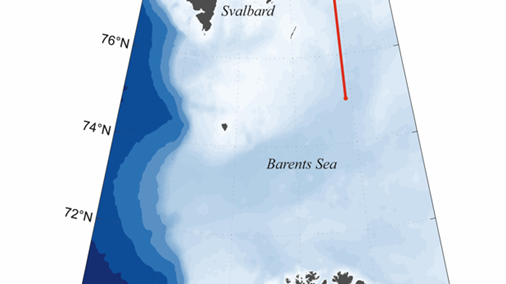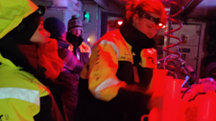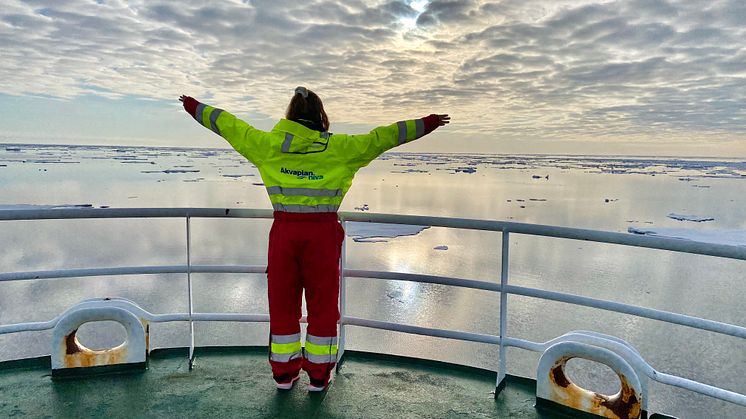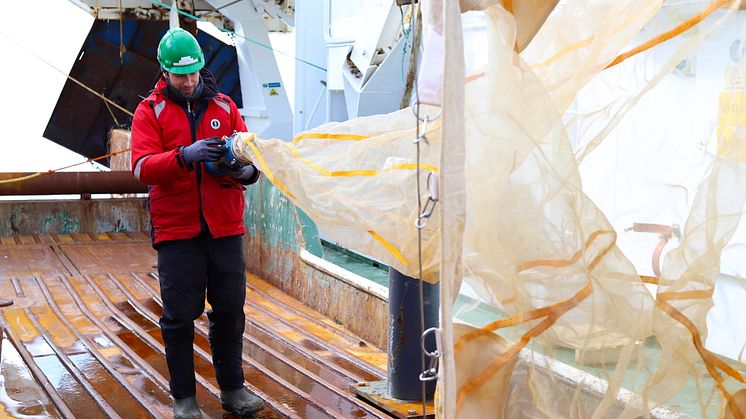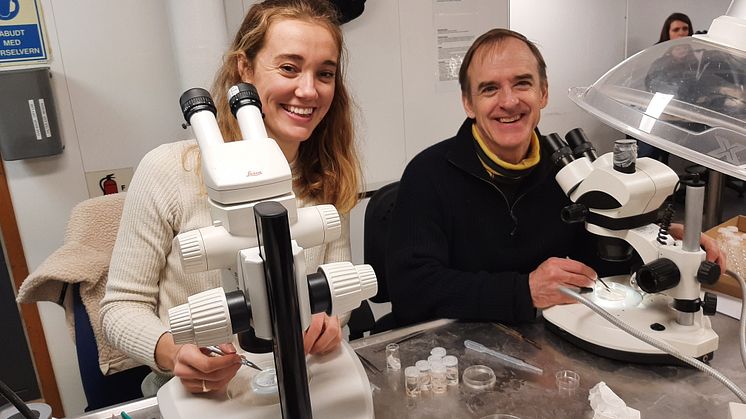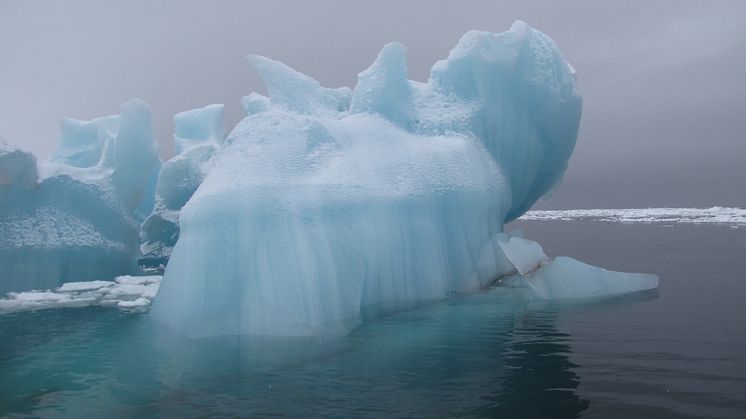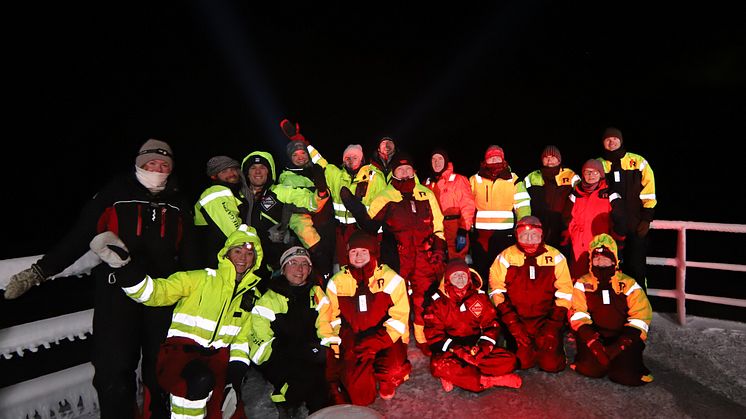
Blogginnlegg -
Science shines in the freezing cold winter Barents Sea
By Rolf Gradinger, UiT The Arctic University of Tromsø
January 3rd nineteen scientists from Norwegian, Canadian and Polish institutions embarked RV Helmer Hanssen for a two week long expedition into the Barents Sea. Our science mission is to evaluate the winter time activity of the marine food web, from tiny bacteria and microalgae to fish. We are specifically interested in understanding any biological differences between the warmer waters (+3deg C) coming from the North Atlantic and the cold ice-covered waters (-1.8degC) coming in Arctic waters. Therefore, the meeting point between theses water masses, called Polar Front, is central to our studies.
After leaving Tromsø onboard the UiT research vessel Helmer Hanssen, we soon received first taste of winter work in the Barents Sea, when a strong gale forced us to abandon our original plans. In order to avoid its impact, we moved as far north as possible into the calmer ice-covered waters of the northern Barents Sea (Fig. 1), where we completed our first research station. To minimize the exposure of artificial light on the biota, we work often with only dim red lights on (Fig. 2).
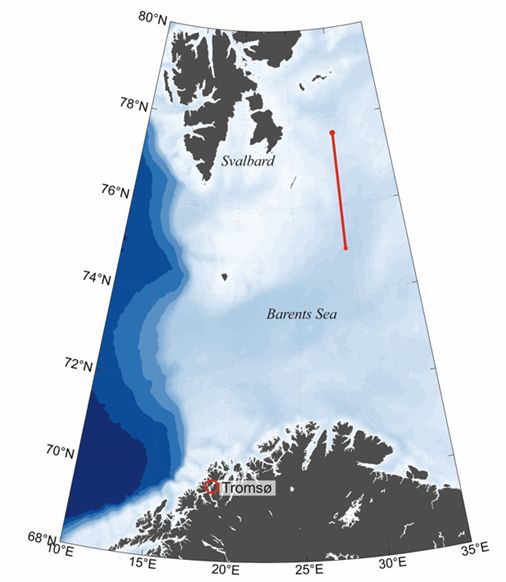
Figure 1: Sampling area in the western Barents Sea. The first station is at the northern end of the red transect line. (Map: Malin Daase/UiT).
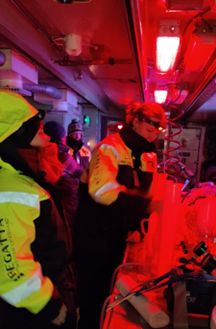
Figure 2: Processing water samples under red lights in the lab areas (Photo: Rolf Gradinger).
In the ice-covered waters, we estimated bacterial and microalgal activities and, to our surprise, we found that the minute microalgae (Fig 3) that fuel the marine food web are in excellent condition, ready to use sunlight for primary production, even in January after many weeks without any direct sunlight, far north of the Polar Circle. In plankton nets, we found different crustaceans, including copepods and euphausiids, but also jellyfish, with some of them reproducing in wintertime. Working at -18deg C air temperature has its challenges, testing the endurance of scientists and all gear, but we were successful in completing this first stage of our expedition, where we had been surrounded by newly formed pancake ice and ice sheets. In the cold and clear days, northern lights have greeted us for some hours. Interestingly it was warmer in our high north locations than in southern Norway, where temperatures had dropped to record lows.
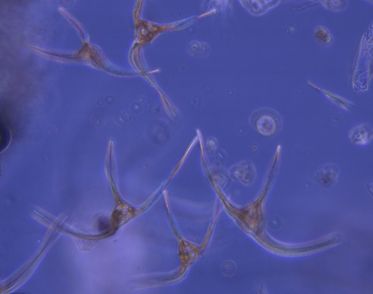
Figure 3: Example of living phytoplankton. The microscope picture shows phototrophic dinoflagellates, each cell about 0.1 mm in width (Photo: Rolf Gradinger).
The next eight days will be filled with further science deployments with one new full station per day, covering the Barents Sea from 75deg N up to 77.30degN, and we will return to Tromsø on Jan 15, hopefully avoiding any further storms in the area. The new data will complement the information we had collected already during two expeditions in spring 2022 and summer 2023 to understand the biological processes and relevance for the marine ecosystem of the Barents Sea Polar Front region.
Onboard scientists contributing to this expedition are from Akvaplan-niva, UiT The Arctic University of Norway, Memorial University Canada, the Institute of Oceanology-Polish Academy of Sciences, and the University of Oslo.
The expedition is part of the RCN funded project “Polar Front ecosystem studies using novel autonomous technologies: Knowledge for environmental management and assessing ecological risk” (PolarFront) with additional financial support from ConocoPhillips and Equinor elucidating the hydrographical, chemical and biological processes in the Barents Sea Polar Front region. The project is led by Paul Renaud, Akvaplan-niva.
More about the Polar Front project here: https://www.akvaplan.niva.no/en/projects-networks/polar-front-ecology/
